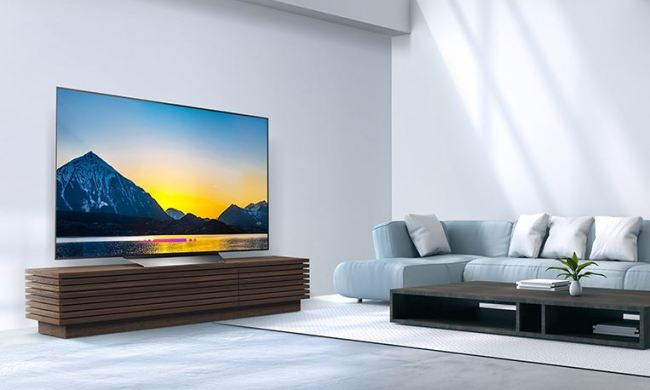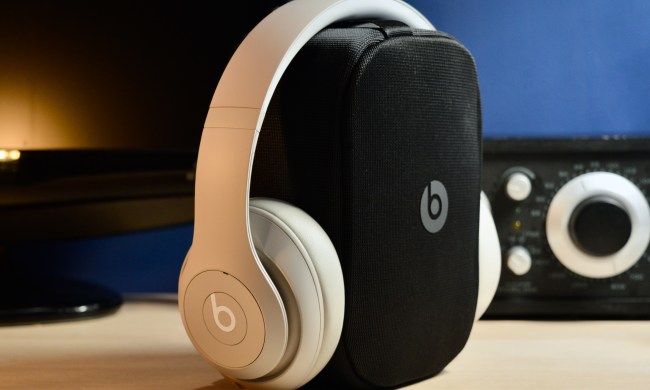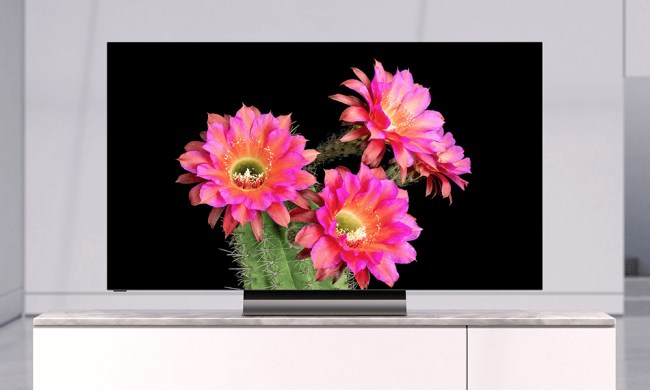If you’ve ever bought a set of Bluetooth headphones, earbuds, or even a Bluetooth speaker, you’ve been choosing (perhaps without even knowing it) which Bluetooth codec you’ll use when connecting to your smartphone. Codecs are a little like the different grades of gasoline you can put in your car, in that they can affect the performance of your gear.
But unlike gasoline, the world of Bluetooth codecs can be a confusing, jargon-dense quagmire of terminology, compatibility, and features. And Qualcomm’s family of aptX codecs (pronounced “ap-tex”), which now includes five distinct versions, might be the most confusing of them all.
It’s tempting to throw your hands in the air and simply trust that you’re getting the best possible sound. But we’ll show you why that might not be the case, and what you can do about it. Some jargon will be involved, but don’t worry, we got you.
What is aptX?
First, a quick primer on why we have Bluetooth codecs in the first place. Because the wireless pipe that Bluetooth creates between devices is pretty narrow when compared to other tech like Wi-Fi, it can’t always accommodate digital music in its original format. So codecs are employed to squeeze audio until it’s small enough to fit down that pipe.
Ever since 2003, when the ability to stream stereo sound over Bluetooth was launched, sub-band coding (SBC) has been the default codec used to do that job. If you own a Bluetooth audio device, whether it’s a phone, a speaker, or a set of wireless headphones, it supports SBC. Having a default codec is great — it’s what ensures that all Bluetooth audio devices will work together.
The trouble is that despite the fact that SBC is capable of delivering very good sound quality, many manufacturers hobbled its data rate in the early days of Bluetooth audio as a way of ensuring that dropouts wouldn’t happen. After all, you might be willing to put up with less-than-perfect sound. But audio that cuts out all the time? Forget about it. That earned SBC a bit of a bad rap. It also didn’t help that SBC suffered from significant latency.
At this point, the aptX codec had already been in use in a variety of settings, like filmmaking and broadcast, when the company that owned it realized it had the potential to work as an alternative to SBC. AptX’s key benefits over SBC are higher-quality audio and lower latency — in other words, you could expect better sound, and if that sound was attached to video, you could expect better synchronization between what you saw and what you heard. The aptX suite of technologies eventually was purchased by Qualcomm in 2015.
The compatibility problem
The trouble with all alternative codecs (including aptX, AAC, LDAC, etc.) is that they require support on both the source (a phone, computer, or other devices) and the sink (speaker, headphones, earbuds) in order to work.
If your phone can do aptX, but your headphones can’t, the Bluetooth connection will revert to SBC, or possibly AAC, if AAC is supported on both devices. In the Android world, this is rarely a problem. AptX has been included in Android almost since the get-go. As long as your audio product works with aptX, that’s what the two gadgets will use.
But to this day, Apple, one of the biggest smartphone makers in the world, refuses to include any non-SBC codec except AAC on its iOS and iPadOS devices.
Are aptX’s benefits real?
Initially, many product reviewers were impressed by aptX, and felt that it delivered improved audio quality over non-aptX-equipped gear. You may still see some reviewers, including folks who write for Digital Trends, complain when wireless headphones or earbuds lack aptX.
This is partly because aptX uses a different form of lossy compression than SBC or AAC — the SBC alternative favored by Apple — and some people prefer the way it sounds. But it’s also something of a holdover from the days when Bluetooth bandwidth was smaller and SBC was often forced to run at lower bit rates, whereas aptX always runs at a fixed 352 kilobits per second (Kbps).
AptX’s nondestructive form of compression was especially beneficial in those early days when most people were listening to digital music in MP3 format. SBC and AAC use psychoacoustic models of compression, which can make already heavily compressed files like MP3 sound worse, whereas aptX does a better job of preserving the details in these files.
These same benefits can still be appreciated today, depending on the source. If you’re streaming Spotify using a free account, the best possible audio setting only delivers 160 Kbps, which means a lot of compression has already been applied. And since Spotify streams in the Ogg Vorbis format, which can’t be used over Bluetooth, your phone has to decode and then re-encode that stream into SBC, AAC, or (if your device supports it) aptX.
On the other hand, if you’re starting with lossless, CD-quality sound, you may not hear much of a difference between codecs at all.
Over time, aptX has evolved from a single codec to an entire family of codecs, each with its own strengths, weaknesses, and compatibility requirements. Latency is a particularly thorny challenge for Bluetooth audio because there are so many links in the chain between the time when a sound is generated by a device like a phone and when it is finally turned into a sound you can hear on your wireless headphones.
AptX Low Latency
Depending on your devices and their supported codecs, latency can range as high as 320 milliseconds. For music listening, this doesn’t matter at all, but for movies, YouTube, and especially gaming, it’s too long. AptX Low Latency (aptX LL) reduces latency dramatically, down to about 38 milliseconds, which makes it possible to react quickly in fast-paced games. AptX LL is limited to lossy, 16-bit audio, so it won’t be anyone’s first choice for critical music listening, but it makes wireless headphones a genuine alternative to wired headphones when a fast connection is needed.
There is a catch, however. Like all other codecs, to get the benefit of aptX LL, it needs to be supported on both ends of the wireless audio connection. Finding headphones and earbuds that have aptX LL is relatively easy. But there are no smartphones or tablets that offer aptX LL.
It all comes down to how phones use their antennas. If we only ever streamed local files from our phones, aptX LL would probably work just fine. But since the days of copying MP3 files from our computers to our phones are essentially over, it means antennas need to contend with Bluetooth and Wi-Fi simultaneously, making reliable implementation of aptX LL very hard, or impossible; it’s effectively gone from the mobile world.
So even though aptX LL headphones are readily available, the only way to take advantage of their low-latency capability is to use a dedicated aptX LL transceiver, usually in the form of a USB dongle that can plug into a computer or game console.
AptX HD
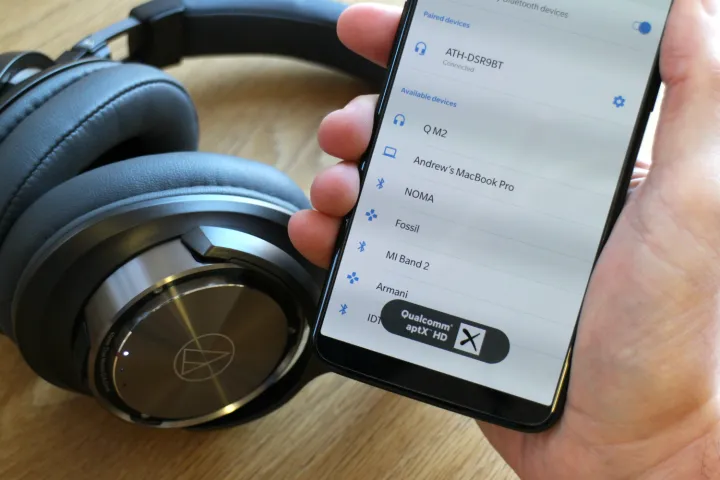
SBC, AAC, and aptX are the most-supported Bluetooth codecs around, but all three are typically limited to lossy compression at 16-bit/44.1kHz, with bit rates that rarely go above 352 kbps. Under most conditions, this delivers a close approximation of CD-quality audio, assuming you’re starting with a high-quality source for your audio.
Still, it was felt that greater quality could be achieved if the supported bit depth, sample frequency, and bit rates could be improved, so aptX HD was born. With support for audio at up to 24-bit/48kHz, and with a boosted, fixed data rate of 576 Kbps, it still uses lossy compression, but it’s capable of preserving more detail, particularly when you’re streaming music that starts off as lossless, 24-bit audio on your device. Some people even consider aptX HD to be a hi-res audio codec.
AptX HD’s encoding improves on aptX’s signal-to-noise ratio (SNR), as well as total harmonic distortion (THD+N), which are two other areas that affect how accurately sound is reproduced. AptX HD is also backward compatible with classic aptX-capable headphones and earbuds — it can revert back to classic aptX when these products are detected, without resorting to SBC.
But there are two downsides to aptX HD. The first is that it uses a fixed data rate. If your phone and headphones can’t maintain a 576 Kbps connection, the reliability of the audio can suffer.
The second is that, due to that higher data rate requirement, it can’t be used on “true” wireless earbuds (where the earbuds aren’t connected by a cable) because the earbuds need some of that bandwidth to communicate with each other. Despite that, some companies have tried to make it work — one notable example is the Bowers & Wilkins PI7. Some reviewers have enjoyed the result, but when Digital Trends tried them, we found the Bluetooth connection to be highly unstable at anything but the shortest distances.
You’ll still see plenty of wireless headphones that offer aptX HD — even models that debuted in 2022 — but the technology has been supplanted by Qualcomm’s newer aptX variant, aptX Adaptive.
aptX Adaptive
Bluetooth wireless connections are notorious for their up-and-down nature. If you live in the countryside and hold your phone in your hand, less than a foot from your headphones, with your Wi-Fi and cellular functions turned off, you’re probably getting a really good connection, at close to the maximum data rate that Bluetooth can support because you’ve heavily reduced possible sources of interference.
But for most of us, this is the exception, not the rule. Changing distances between devices and interference from a huge variety of other radio frequencies can dramatically affect the quality of Bluetooth links, making any codec that operates at a set data rate (like aptX and aptX HD) susceptible to poor performance.
A scalable codec — one that can adjust its data rate in real time — can go a long way to solving the interference problem. If you’ve ever watched Netflix and noticed how the image quality sometimes goes from sharp to a bit pixelated, then back to sharp again, you’re seeing Netflix’s scaling at work as it responds to changes in the speed of your internet connection.
AptX Adaptive supersedes aptX and aptX HD (yet is still backward compatible with both) and has the ability to ramp its data rate from 110 Kbps to 620 Kbps as link conditions change.
By default, aptX Adaptive uses the same 24-bit/48kHz resolution of aptX HD, but it can also go higher, up to 24/96, giving it the same maximum resolution as Sony’s LDAC codec. It’s also a more efficient codec, according to the company, which says it can achieve the same quality as aptX HD at just 420 Kbps, as compared to HD’s fixed 576 Kbps. But true to its name, it’s not just a 24-bit codec. Adaptive can also operate in 16-bit/44.1kHz mode when required.
The adaptive nature of the codec goes beyond bit depths and sample frequencies. It can also respond to the kind of audio activity you’re engaged in. When it detects that you’re gaming, it can automatically move to a low-latency mode, which, under optimal conditions can match the performance of aptX LL. If it detects that you’re on a call, it can adjust its settings so that you and your caller are both getting high-quality audio (aptX Voice).
If this sounds like a best-case scenario, it is, but as is often the case, there are several caveats.
Unlike aptX and aptX HD, which can be enabled using software on the source side of the equation (which likely explains why they’re included with the Android operating system regardless of which phone you buy), aptX Adaptive requires the use of Qualcomm’s own chips on both the source and sink devices.
So you can no longer buy an Android phone and assume it supports aptX Adaptive. Google’s Pixel phones are a good example. Even the newest Pixel 7 and Pixel 7 Pro don’t have aptX Adaptive built-in.
Qualcomm has also given source and sink manufacturers a tremendous amount of discretion over which aptX Adaptive features they can enable. The ability to do hi-res audio at 24/96 was added to aptX Adaptive in 2020, and it must be turned on by the manufacturer. The same thing goes for low-latency and high-quality voice calls. Some companies will simply decide not to do that. Unfortunately, the only way to know if your devices will deliver a specific feature is if it is listed in the product specifications for both products.
For instance, both the Sennheiser Momentum True Wireless 3 earbuds and the Master & Dynamic MW75 headphones support aptX Adaptive, but the MW75 are currently limited to 24/48, while the Sennheisers will go up to 24/96 — but again, only if the source device also supports it.
On the vast majority of phones, there’s no way to see the data rate your two devices are using, making it difficult to know if you’re getting the best possible audio quality, or how changing your distances or locations is affecting that link.
AptX Lossless
So far, all of these Qualcomm codecs use lossy compression, which removes some portion of the original information in an audio file. In an ideal world, codecs would operate losslessly — compressing the size of the file without affecting any of the audible bits.
As the name suggests, aptX Lossless promises a bit-for-bit perfect delivery of CD quality at 16-bit/44.1kHz — a kind of Holy Grail for wireless sound — something that has traditionally been impossible because of the inherent limitations of Bluetooth bandwidth.
Qualcomm claims to have overcome this limitation by combining aptX Adaptive’s ability to operate at 16-bit/44.1kHz and Qualcomm’s Bluetooth High Speed link, which can deliver the 1 Mbps of bit rate needed to do lossless audio.
Qualcomm says it has seen aptX Lossless work even at distances of 15 feet or more, in congested wireless environments. But since it can be hard to predict link quality, aptX Lossless will scale according to real-time conditions, going all the way down to 140 Kbps if needed. That won’t be anywhere close to bit perfect lossless audio, but you won’t get disconnected.
At the top of data rate scale, users can decide if they want the codec to deliver 16/44.1 lossless audio or aptX Adaptive’s 24/96 lossy audio.
Getting aptX Lossless to work correctly requires a lot of technologies to operate in lockstep with one another, so Qualcomm only makes aptX Lossless available on devices that have passed its Snapdragon Sound certification program.
Snapdragon Sound
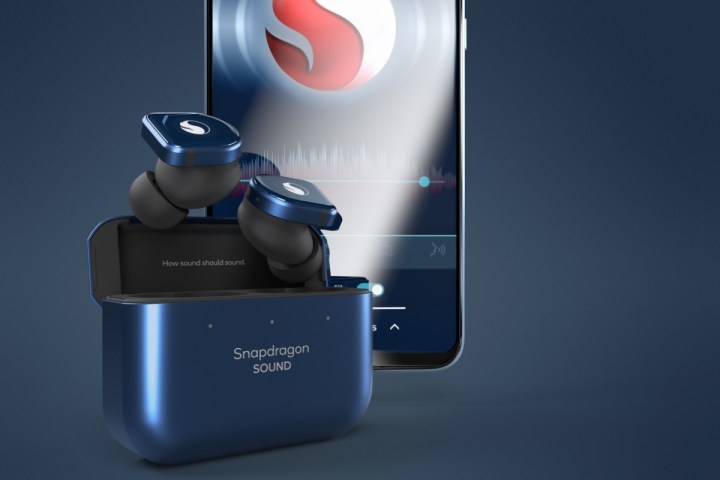
AptX Adaptive ushered in a new level of codec capabilities, but as we detailed above, many of those capabilities are at the discretion of manufacturers. That creates a problem: How do you know what you’re actually getting when you buy a product that advertises itself as supporting aptX Adaptive?
To help address this, Qualcomm created Snapdragon Sound. Contrary to what it sounds like, Snapdragon Sound isn’t a new technology or codec. Instead, it’s a certification, one that guarantees that the following aptX Adaptive features will work when two Snapdragon Sound devices are used together:
- 24-bit/48kHz
- 24-bit/96kHz
- Low-latency mode when gaming
- AptX Voice (super wide band voice) when on a call
- Qualcomm Bluetooth High Speed link
Technically speaking, there’s no secret sauce here. Any manufacturer that uses Qualcomm’s S3 or S5 chips can deliver all of these features if they choose. But you’ll only see the Snapdragon Sound label on a product if it supports them all and if the device maker has submitted their product to Qualcomm to undergo its verification tests.
The intent behind the Snapdragon Sound program is to let buyers breathe a sigh of relief, knowing that as long as they see the label on their wireless audio devices and their phones, everything will “just work.” However, the list of features that Qualcomm includes in its Snapdragon Sound label will not remain static, even though the brand will look the same.
For instance, you’ll notice that the list of features above does not include aptX Lossless. That’s because the initial definition of Snapdragon Sound was developed before Qualcomm was ready to release aptX Lossless. As of 2022, lossless is included in Snapdragon Sound, and that’s where the value of a single label starts to falter.
If your Snapdragon Sound wireless earbuds were one of the earliest models, like the Oddict Twig Pro, they probably don’t support aptX Lossless, and can’t be updated to support it, even if you’re using them with a Snapdragon Sound phone that does support lossless.
It doesn’t stop there. Snapdragon Sound’s features will likely change each year. In 2023, for instance, Snapdragon Sound will include head-tracked spatial audio, Bluetooth LE Audio compatibility, lower latency for gaming, and support for in-game back-channel voice. It even modifies aptX Lossless’ sampling rate from 44.1 to 48kHz.
Once again, buyers will have to do their homework. Snapdragon Sound will always signal that features and performance have been tested and certified by Qualcomm, but it will be less reliable as an indicator of which specific features you’ll be able to use.

